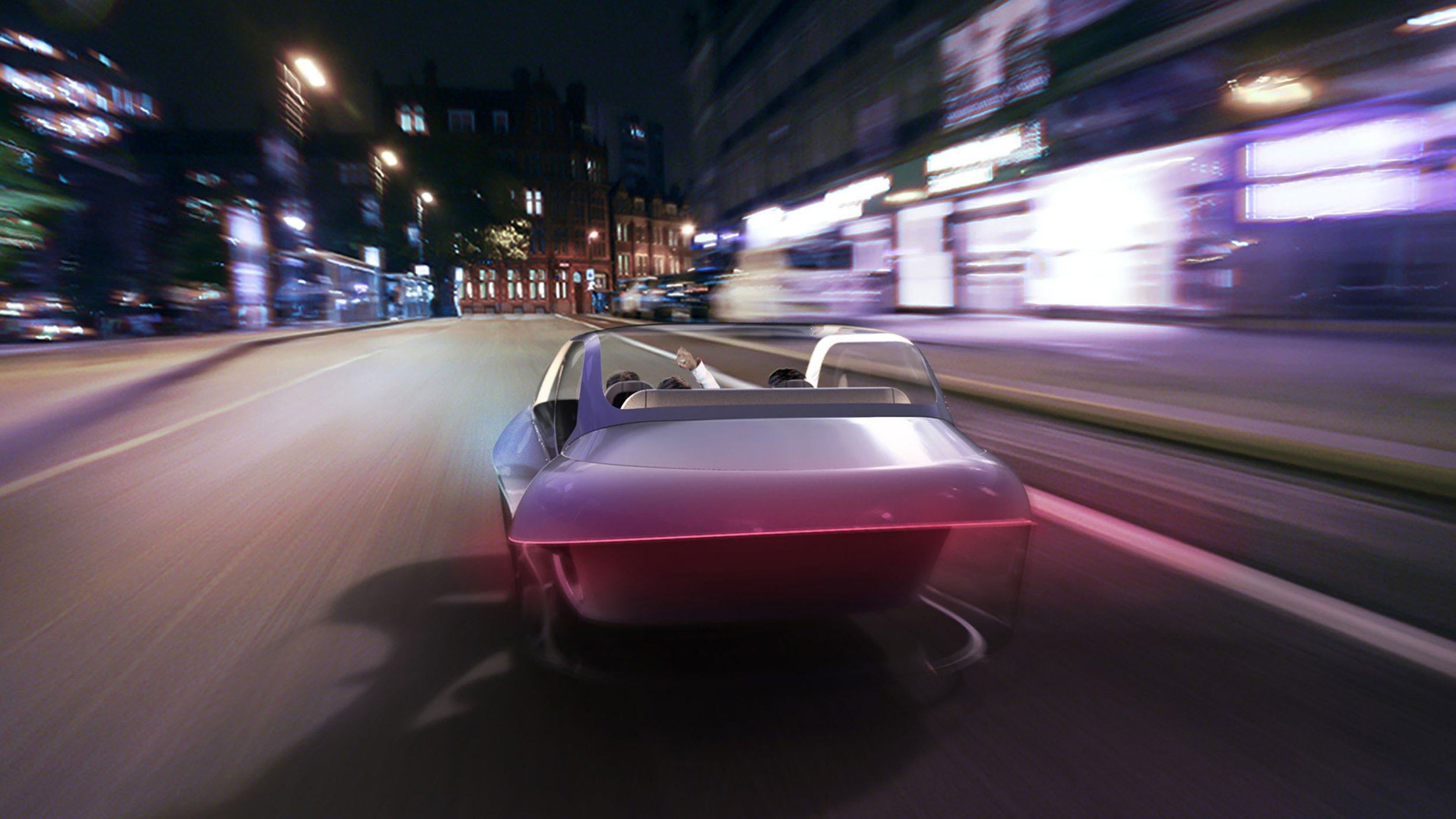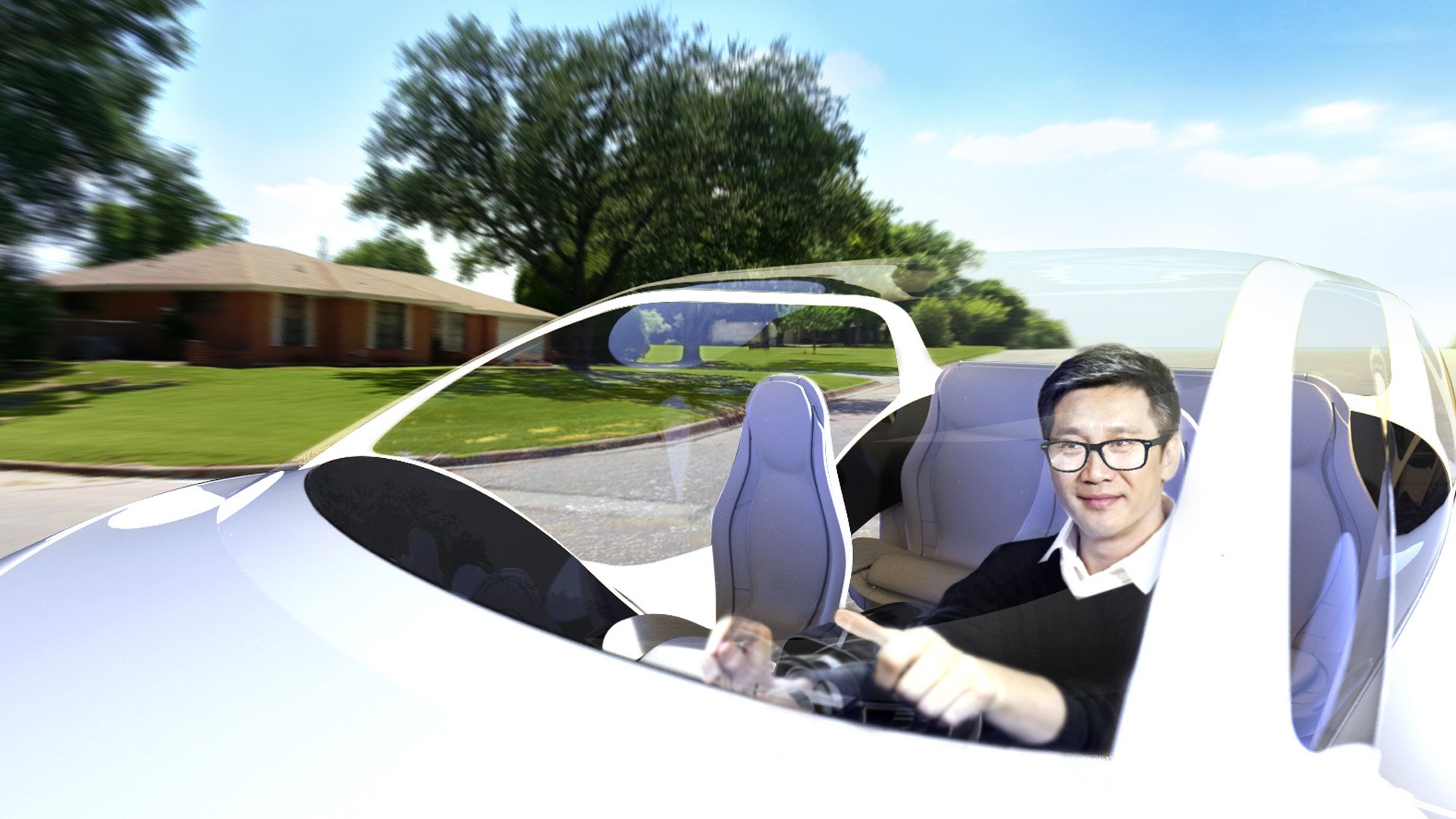
RADIANCE
SAIC Motor’s vision for the future of transportation.
Timeline
Oct 2018 - Feb 2019
What I Did
performed as the sole UX designer on the project
user experience research
user testing
user flows & wireframes
design sketching
persona development
storyboarding
ideation & rapid prototyping
UI + visual design
design system creation
Who I Worked With
Product management, business development & marketing to understand business & stakeholder needs.
R&D and engineering for technical feasibility & to build + implement designs.
Industrial designers, HMI development, AR/AI/VR design & engineering teams to design & develop concepts.
Executives & management to present user research findings & final designs.

Who is SAIC
SAIC Motor Corporation Limited is a Chinese state-owned automotive design and manufacturing company headquartered in Shanghai, China, with multinational operations.
SAIC sponsors the development of future automotive technologies, often partnering directly with forward-thinking tech-based companies.
SAIC delivers optimum international supply chain solutions for automotive and non-automotive clients in North America and East Asia.

The Challenge
SAIC created 'Project Radiance' to envision the evolution of transportation from 2020 through 2025 and beyond to showcase how their HMI technology can facilitate and enhance future user experiences.
SAIC envisions their future HMI as a connecting metalayer between passengers and their out-of-car touchpoints & ecosystems.
Project Radiance establishes a vision for an interaction system that focusses on the opportunities seen in new transportation needs and patterns.
SAIC will build an interactive cockpit demonstrator called Infinity, combining new UI and SAIC sensing technology with AI features to showcase the user experience concepts of Project Radiance. This will garner interest, position SAIC as a forward-thinking company, and open up B2B partnership opportunities.
The roadmap involved parsing concepts into 3 categories.
NOW: What is capable today with current tech (2020).
Next: What can we achieve in the near future (2025) with emerging trends & tech.
VISION: The overall ideal vision of the future of transportation & mobility (2025+).
Creating a vision of the future of transportation is a project with a very large scope so it made sense to break it down into two phases.
Phase 1 - Concept Design
Design & User Experience
Explore disruptive, market research, form inspiration.
Generate conceptual designs & vision built around current & future user needs/problems (personas/user stories/sketches/develop design language + design system/wireframes/storyboards/3D models/build demonstrator to showcase user experience + SAIC tech & develop 3rd party/OEM partnerships)
Software:
Research SW development platform
Develop initial UI/3D component, mapping to touch events
Software architecture and component design
Data/control communication module and protocol design for multiple screen UI component
Hardware:
Develop initial system architecture, coordinate w/ design direction
Connect with specialty component suppliers and gather requirements
Early prototyping on HIPE and integration of sensors
Phase 2 - Full Build & Implementation
Finalize UX/UI
Bug fixes & Improvements
Fully develop & implement software & hardware on HIPE.
Final integration of components
System integration with OEM & 3rd parties
Competitive Analysis
Research began by doing a competitive analysis of other future mobility concepts and what technologies and user experiences they were exploring.
Peugeot Instinct Concept
Car adjusts its driving based on wide data collection and pro-actively makes meaningful suggestions
Four different driving modes allow the driver to choose the car’s level of autonomy
Retractable steering wheel and gas pedal for self-driving mode
McLaren 720S Folding Display
Instrument cluster that physically moves up and down to let the driver choose between two different screens (racetrack vs. normal driving)
Dependent on the situation more information is given or track visibility is improved
IDEO Future Mobility Concept
Privately owned vehicles become a public resource
Customizable pod experiences for their passengers (e.g. privacy, social, working mode)
Private storage opportunities
Various refinancing models
Volkswagen Sedric Concept
Lounge on wheels (LV5)
Voice-controlled personal assistant
OLED screen as windscreen with augmented reality serves as a communication and entertainment
Summoning with the press of one button
Key Takeaways
Mobility will evolve beyond as just a way of getting from point A to B and this will change the in car user experience for both the driver and passengers.
As the world population continues to grow, resources become scarce, and sustainability becomes more and more imperative, personal transportation will give way to scalable shared mobility platforms.
Assistive technologies for car passengers are at the core of many concepts.
AR/MR solutions become familiar items in more and more concept cars
Privacy and sound zones and ‘audio conditioning’ are perceived as enabler for comfortable shared mobility scenarios (driving time = ‘me time’).
Mechanically shape shifting dashboards find their way into production cars (although not mass market).
Further M&A consolidation of high-tech players – non-automotive actors buy into automotive knowledge (Intel buys Mobileye for $15.3bn, Samsung buys Harman for $8bn).
The competitive analysis key takeaways were synthesized into a design philosophy...

Design Philosophy
Mobility is undergoing massive transformation. Vehicles will become a dynamic network of ‘valuable touch points on wheels,’ far exceeding their former primary focus of pure A to B mobility.
Project Radiance Addresses These Key Aspects:
- A new generation of dynamic, continuous interfaces driven by artificial intelligence.
- Interfaces that intuitively connect humans with each other.
- Interfaces that seamlessly connect humans with their surroundings & provide context.
- A user experience that is built around the driver and occupants equally.
User Personas
User personas were developed to represent end-user archetypes and integrated into user journeys to highlight goals, needs, and behaviors, considering various users such as new and experienced drivers and passengers
Use Cases and User Journeys
Use cases were created to outline user journeys for common transportation situations like commuting, leisure, highway travel, and urban roads. These journeys examine factors such as environment, stress levels, internal and external influences, and goals, which highlight pain points and reveal opportunities for solutions throughout the user journey.
User Problems & Pain Points
User journeys revealed problem areas and pain points which were mapped out on Post-It notes and then clustered into categories.

Ideation
The pain points identified in the user journeys were mapped alongside current and emerging SAIC HMI technologies to brainstorm potential solutions for SAIC. These solutions were categorized by generational technology: Now (today), Next (2025), and The Vision (2025+/future).
Solutions were not only brainstormed but also sketched out and incorporated into user journey storyboards. This visual depiction helped illustrate the solutions and user interactions which proved useful for hardware (industrial design), user experience and UI development.
Sample User Problem/Pain Point
Every time a user enters a car, there are several recurring interactions needed until a desired outcome is achieved, although the user always wants to do the same thing (e.g. select a destination, see the weather, change media input source).
Solution Themes/Areas
The brainstormed solutions were grouped into eight thematic categories based on their alignment with SAIC HMI technology and the specific user needs and pain points they addressed.
Innovation Scale
The various solution themes were mapped by their main potential inside an innovation scale to see how feasible each theme was vs their possible potential to help identify which solution themes SAIC should prioritize in developing.

Chosen Solution Themes
With The Most Potential
Cognitive Companion
The Cognitive Companion is an in-car digital assistant powered by AI, designed to automate tasks and filter relevant information to alleviate the effort associated with daily mobility activities and more. It integrates with various sensors and syncs with personal devices to learn and adapt to the user's habits, needs, and preferences.
Addressed User Needs/Pain Points
Helps all passengers to easily access in-car functions or to obtain information during their journey.
Mitigates distraction/cognitive load for users & gives valuable recommendations.
Proactively automates tasks & behaves intelligently based on the context/situation.
Optimizes the position of UI components for occupants.
Adjusts the size, content, and complexity of UI components.
Offers tools for personalization.
Connecting Group Space
Traditionally, cars are designed for drivers. Increased automation shifts this focus to group design. While cars haven't supported group interaction through HMI, future interiors will promote direct, engaging interaction among all passengers, balancing shared experiences with individual needs through flexible, shared interfaces.
Addressed User Needs/Pain Points
Devices brought into the car (BYOD) act as personal gateways to connect to the car's systems and passengers.
Features like augmented reality headrests, HUD, continuous virtual dashboard form connecting group spaces (e.g. visually connecting the seat rows).
Backed by dedicated apps (connecting apps for group rides) that help groups of people to make the most of their joint time throughout the whole journey.
Delightful World & Interactive Shell
Cars, once isolating, can use big data to connect passengers to the real and digital worlds by bringing the outside in and the inside out. HMI like mixed reality headrests, AR windows, adaptive screens, variable sound zones, and augmented mobility create a more immersive and connected space, while also enhancing focus by filtering and contextualizing content. A communicating shell better integrates and connects traffic participants through implicit or explicit information and boosts spatial awareness.
Addressed User Needs/Pain Points
Removes the isolation while inside a vehicle.
Creates a more immersive & connected contextual experience by connecting the outside and inside worlds through integrating the environment.
A communicating shell better integrates and connects traffic participants to surroundings & increases the user’s situational & spatial awareness.
Holoportation & other connecting apps for group rides let passengers experience their destinations while still on the ride or invite people into the car virtually.
Shared & Public Ownership
A car, assigned to multiple owners or dynamically becomes part of public transportation networks – at the same time, it provides all privacy & flexibility needs of a private car. In addition, the car potentially could refinance itself.
Addressed User Needs/Pain Points
Make mobility affordable and sustainable for larger groups (reduced TCO and footprint), without sacrificing individual needs.
Enables access to transportation for a larger a subset of the population while requiring less vehicles on the road.
Opens up B2B opportunities with 3rd party services (E.g. ride share, fleet vehicles, etc.)Single vehicles and fleets can connect to existing ecosystems, demand and availability will drive unit sales and on demand service upgrades – in software and hardware.
Planet System UI
A ‘Cognitive Companion’ will automate and manage all notification & cues, as well as regulate the moveable and scalable UI.
The interface is designed around a Planet theme UI where each cluster of info gets its own planet that can be moved/scaled/or interacted with by all occupants in the car at varying degrees of interaction via touch dashboard that fully wraps around all occupants in the vehicle.
Finalizing the UI and interactions for the AI Companion that will be used to demonstrate the user journey of a commuting to work while receiving a call and which requires a schedule change that AI companion proactively executes for the driver.
An interactive showpiece cockpit demonstrator called Infinity was built to simulate and immerse users into the user experience of the Intelligent Companion developed by SAIC.
Infinity was used to demonstrate and advertise SAIC’s HMI technology and open up B2B partnership opportunities.
Clip of the AI Companion recognizing the driver and setting up the car settings and dashboard content for his personal preferences.

Infinity Cockpit Demonstrator
The Infinity Cockpit concept is a showpiece demonstrator of the Project Radiance, combining new UI and sensing technology with AI features developed at SAIC Innovation Center.

This demonstrator was built to enable SAIC to advertise itself as a future-thinking company internally and externally, garner interest, and open up partnership opportunities.
The Infinity demonstrator would simulate SAIC HMI designs + solutions to management and third party partners to sell the SAIC’s Project Radiance future of mobility vision.

WORK IN PROGRESS
- More content coming -





























